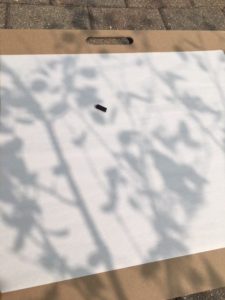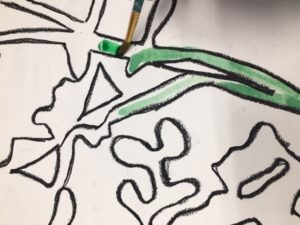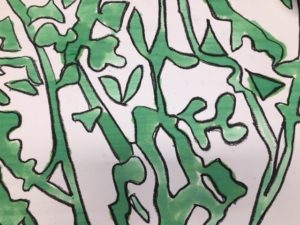Shadow Tracing
Objective: Drawing and painting with light and shadow is an intriguing art encounter that is a great cross curricular learning opportunity. What’s great about the shadow drawing experience is that it can be as simple or as complex as you choose to make it, requires minimal tools and artists of any age and skill level will enjoy it. Shadows move, change, overlap and make strange shapes that don’t seem to reflect the actual object. Because of this, we encourage those perfectionist-types to shadow draw because it’s a wonderful lesson on being free and spontaneous with your art. Drawing and painting light and shadows puts us in direct contact with the natural movement of the sun so there’s the inclusion of a science lesson coupled with the meditative realization that life evolves and is ever changing.
Materials: Objects found in the great outdoors, paper (bigger is better), drawing tools such as pencil, charcoal, pastels, paints (optional)
Directions:
- Take your materials outside and decide on an object, or objects you want to work with. This could be a tree branch, leaves of a plant, flower stalks, the architectural lines of the house, etc… Any size sketchbook will work but it’s fun to have plenty of room to spread out. Either way, it’s helpful to have a hard surface beneath you. Position your paper and figure out the composition you want to work with.

- Observe the shapes that are created on your paper. Trace the shadows quickly, knowing that they will move with just a slight breeze or the passage of time. Allow the lines to be loose and free. Alternate your approach by sometimes drawing the contours of light and other times, the shadows.


Make 2 versions of this project by painting in the positive space (the shadows of the object) then paint in the negative space (the light surrounding the shadows) of another drawing.


Bonus: Place your paper in a set location and maintain it’s position throughout the day. Draw the same object at different times throughout the day and use a different color for each time you draw so that the changes are clearly indicated.
*Obviously, shadow drawing can be successfully done indoors with either the natural light coming through the window or by setting up directional lighting. Try drawing the shadows that toys create, or the abstract lines and shapes created by placing a reflective surface next to a light source, such as the textured glass of a mason jar and see what happens.

